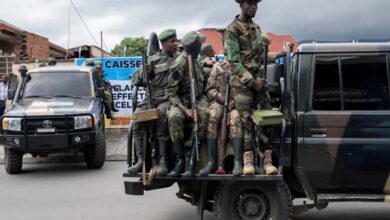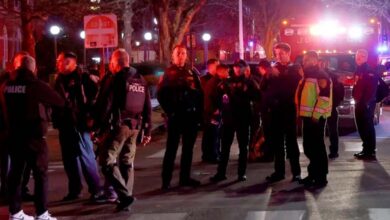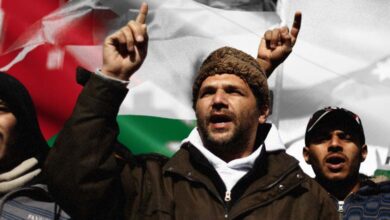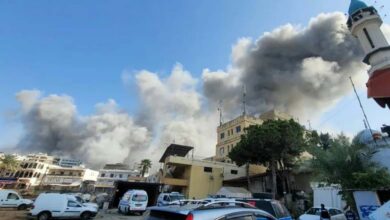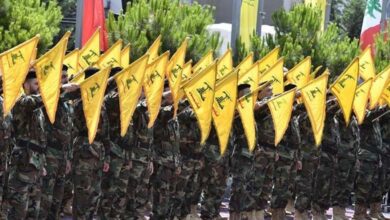Israel reopens Rafah crossing as Trump warns Hamas against escalation
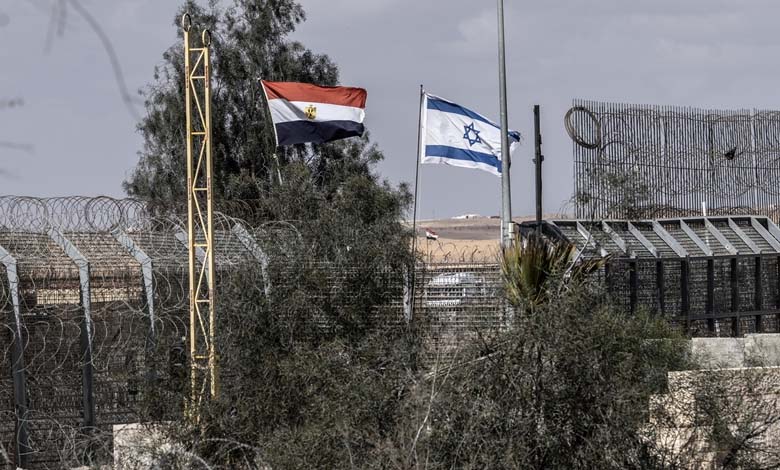
Israel has decided to ease restrictions on humanitarian aid entering the Gaza Strip after receiving the remains of four hostages from Hamas, according to the Israeli public broadcaster Kan on Wednesday.
The report noted that the Israeli government canceled punitive measures it had intended to impose on Hamas, including halving the number of aid trucks allowed into Gaza, following the handover of the bodies.
-
Massive destruction as thousands of displaced Palestinians return to Gaza
-
A Complex and Secret Operation: Behind the Scenes and Timing of the Hostage Exchange in Gaza
Handover of remains and de-escalation
The decision came after Hamas, through the International Committee of the Red Cross, delivered four coffins believed to contain the bodies of Israeli hostages killed while in captivity in Gaza since the October 7, 2023 attack. Israeli officials said the group had informed mediators of its intention to transfer the remains Tuesday evening, which was carried out.
Israel had earlier threatened to reduce aid and delay the reopening of crossings in response to what it described as a “violation of the ceasefire agreement” due to Hamas’ failure to deliver the hostages’ bodies on time.
-
Gaza After the Truce: Total Destruction and a Return Amid the Rubble
-
Between War and Reconstruction: How Can Gaza’s Economy Rise from the Rubble?
This development coincided with statements from U.S. President Donald Trump, who warned Hamas of military confrontation if it failed to disarm. Returning from his Middle East visit, Trump declared that the U.S. “would force the group to disarm swiftly, and possibly by force,” stressing that continuation of the truce depended on Hamas’ compliance.
Trump made these remarks after addressing the Israeli Knesset, where he called the ceasefire deal “a historic dawn for a new Middle East” and unveiled a plan to end the war and secure the release of the remaining hostages.
-
The War Winds Down in Gaza as Israel Begins Gradual Withdrawal
-
Gaza Finally Breathes Again… Ceasefire Announcement Moment by Moment
Renewed tensions in Gaza
Despite the ceasefire, Gaza has witnessed mounting security tensions. Video footage showed Hamas fighters carrying out summary executions of men accused of collaborating with Israel. A Hamas source confirmed the authenticity of the footage, describing the actions as measures to “maintain internal order.”
Residents reported that Hamas fighters redeployed along main roads used by humanitarian convoys, while Palestinian security sources cited deadly clashes in recent days between Hamas members and rival groups.
-
From Gaza to Re’im: Details of the Hostage Transfer Plan
-
Gaza Bids Farewell to Fire with Cheers and Tears, Awaiting the Implementation of the Agreement
Gaza’s Ministry of Health announced that six people were killed in Israeli drone strikes east of Gaza City and Khan Younis. Hamas accused the Israeli army of breaching the truce, a charge denied by Tel Aviv, which said the strikes targeted infiltrators approaching its positions.
A tragic humanitarian scene
On the ground, indicators show that the war-weary enclave faces massive devastation after two years of conflict, leaving tens of thousands dead and wounded. Gaza’s Ministry of Health reports over 68,000 deaths, while Israeli estimates put the October 2023 Hamas attack at about 1,200 killed and 251 hostages taken.
-
From Spark to Agreement: Key Milestones in the Gaza War Over Two Years
-
Gaza Negotiations: Cautious Optimism in Sharm el-Sheikh as Mediators Join the Talks
With the ceasefire in place, Hamas-affiliated teams are clearing rubble, reopening roads for aid delivery, and repairing water networks, amid warnings that the humanitarian crisis could worsen if relief operations do not resume at a faster pace.
Obstacles to lasting peace
The summit hosted by Egyptian President Abdel Fattah al-Sisi with Trump’s participation ended without tangible progress toward forming a new government in Gaza or creating an international monitoring force. Israel insists the war will only end with Hamas’ disarmament and relinquishment of governance in the enclave—conditions the movement rejects.
-
The Fire of Loss in the Gaza War: No Bodies, No News
-
The Second Anniversary of the War: Terrifying Losses Beyond Numbers in Gaza
Militarily weakened by two years of bombardments and ground incursions, Hamas is nevertheless trying to gradually reassert administrative and security control, declaring that it “will not tolerate chaos or crime in Gaza.”
While some field developments point to relative de-escalation, observers believe that the path toward a lasting settlement remains fraught with political and humanitarian obstacles, and that Rafah crossing—despite its reopening—remains a symbol of the ceasefire’s fragility and Gaza’s uncertain peace prospects.



